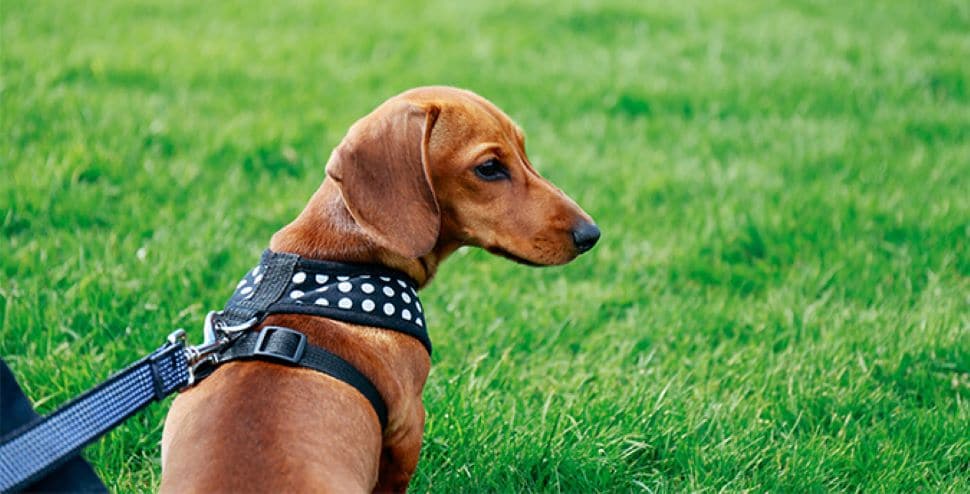Getting Your Dog’s Harness to Fit Right

We’re sure you’ve experienced tripping your dog up during a run as the dog leash gets tangled around their legs. A functional dog harness helps you avoid these kinds of disasters that might lead to a trip to the vet’s emergency room.
A harness helps you control your pooch in any situation, whether it be a hike or walk down the street, and it provides a point of leverage where you dictate the movement of your dog. Thanks to the multiple attachment points, the harness offers numerous places to grab your dog and move or lift them out of harm’s way.
For elderly dogs, dog support harnesses can help you to walk your dog when their joints and muscles are weaker than they used to be.
TIPS FOR SELECTING THE RIGHT SIZE HARNESS FOR YOUR DOG
Buying a harness or vest for your dog requires a quick assessment of the right size to fit your pooch. If the harness is too tight, they’ll feel uncomfortable, and if it’s too loose, you’ll lose control in critical situations.
Start your harness assessment by grabbing a measuring tape to take the following measurements.
Chest: Start at the base of the rib cage above your dog’s belly. Measure around the chest in a loop back to your starting point.
Neck: Find the thickest part of your dog’s neck and take the measurement around the diameter.
Weight: Trying to get your dog to stand on a scale is next to impossible. Pick your pooch up, take your weight while holding them, and subtract your bodyweight from the total. If you own a medium or large breed that’s too heavy to pick up, you might need to take them to the vet for weighing. Don’t skip this vital step!
After you’ve collected your dog’s measurements, visit an online retailer and select one of the best harnesses that suits your breed and their activity level. When choosing the equipment, most retailers offer fitting guides that account for the measurements in your assessment – the most common being the weight of your furry friend.
We find that it’s best to choose an overhead harness with quick-release plastic buckles for easy fitment and release. Make sure you have the right size, or the plastic clips may pinch your dog’s skin during fitment. Most overhead harnesses come with four or five adjustable buckles to ensure a customized and snug fit around the chest and neck.
TIPS FOR FITTING AN OVER-HEAD HARNESS
Start the fitment by releasing all of the buckles, so they’re loose when you clip it onto your dog – you can tighten it up after clipping it together. The best gauge for a snug fit is if you can fit two fingers under the harness at any point.
Slide the harness over your dog’s head and pull the chest piece up to touch the belly of your pooch. Take the two clips on the chest piece and fasten them to the corresponding points on the top of the harness. Adjust the side, chest and neck clips to a snug fit that isn’t too tight.
SIGNS OF POOR HARNESS FITMENT
Fitting the harness is a critical step – too tight, and you’ll hurt your furry friend, while too loose may give them a chance to slip out of it during a heated moment at the park. If you notice any fur loss or chaffing around the harness line, your harness is probably too tight. If the harness feels to lose and slops around your dog’s body, you need to tighten it up a bit.
